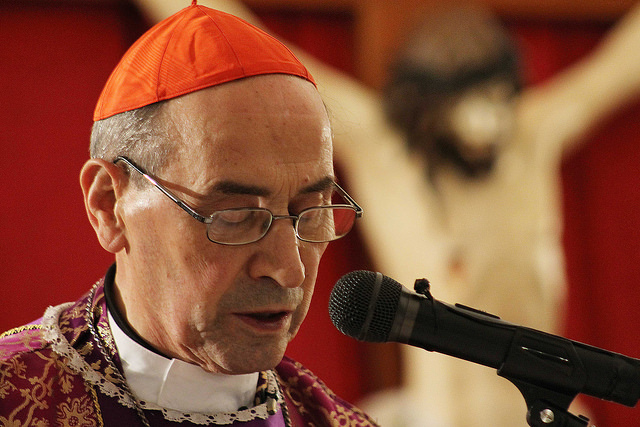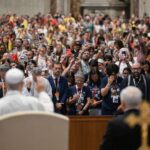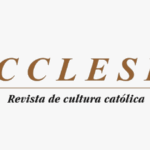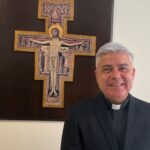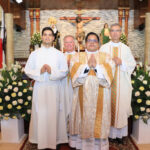Five years have passed since his death, and his mortal remains have been transferred to the Abbey of Fossanova, a Cistercian monastery with a rich tradition and the place where Saint Thomas Aquinas died. We take this opportunity to remember his life, his work, and his legacy.
On July 9, 2010, Cardinal Velasio de Paolis was appointed by Pope Benedict XVI as the Pontifical Delegate of the Congregation for the Legionaries of Christ. It was undoubtedly a mission he carried out with paternal care and for which we are very grateful, as he not only faced with us the main task entrusted by the Holy Father to rework the Constitutions and review the charism, but also accompanied us in addressing the most important and urgent issues of the Congregation in order to safeguard the spirit, discipline, and perseverance of the members.
Five years have passed since his death, and his mortal remains have been transferred to the Abbey of Fossanova, one of the most important religious monuments of the Middle Ages, the place where Saint Thomas Aquinas died, and a place of prayer. For this reason, we remember the life and work of Cardinal de Paolis.
Biography
Cardinal Velasio De Paolis, C.S., emeritus president of the Prefecture for the Economic Affairs of the Holy See, was born on September 19, 1935, in Sonnino, diocese of Latina-Terracina-Priverno (Italy). He studied at the minor seminary of the Congregation of the Missionaries of San Carlos Borromeo, also known as Scalabrinians. He made his first religious profession on September 20, 1955, in Crespano del Grappa, and his perpetual profession on October 4, 1958, in Piacenza. He was ordained a priest also in Piacenza, at the motherhouse of his Institute, on March 18, 1961.
He began as a professor of moral theology and canon law at the Scalabrinian major seminary in Piacenza and later taught in Bassano del Grappa from 1965 to 1970. Subsequently, he was rector of the international college in Rome until the end of 1974. At the same time, he served as provincial vicar of his Congregation and, in 1974, began collaborating as a counselor and general procurator.
In 1971, he started his tenure as a faculty member in the canon law department of the Pontifical Gregorian University. In 1980, he became an extraordinary professor, and in 1983, a full professor. In 1987, he was called to teach also at the Pontifical Urban University, as an associate professor of the faculty of canon law. Later, he became a full professor and in 1998 was appointed dean of the faculty, where he taught theology of law.

He served as a consultor for various dicasteries of the Roman Curia: the Congregation for the Oriental Churches; the Congregation for Institutes of Consecrated Life and Societies of Apostolic Life; the Supreme Tribunal of the Apostolic Signatura; and the Pontifical Council for Legislative Texts.
He also dedicated himself to apostolic activity and preaching, giving courses on spiritual exercises and retreats to various parish groups, laypeople, and religious communities.
On December 30, 2003, John Paul II appointed him secretary of the Tribunal of the Apostolic Signatura, of which he later became a judge. The Pope assigned him the titular episcopal see of Telepe and he received episcopal ordination at St. Peter’s Basilica on February 21, 2004, from Cardinal Angelo Sodano, then Secretary of State.
On April 12, 2008, he was appointed president of the Prefecture for the Economic Affairs of the Holy See by Pope Benedict XVI and, at the same time, was promoted to archbishop. Pope Benedict XVI also made him a cardinal of the Deaconry of Jesus Good Shepherd on the Mountain during the consistory of November 20, 2010, and a year later, on September 21, 2011, accepted his resignation from the position of president of the Prefecture for the Economic Affairs of the Holy See due to age limit.
He died in Rome on September 9, 2017, and was buried in the Church of the Scalabrinian Fathers in the Verano Cemetery in Rome. His body now rests in the Abbey of Fossanova.
The Abbey of Fossanova
The Abbey of Fossanova was founded in the 9th century by the Benedictines, but in 1133 it passed to the Cistercians, who restored and restructured the marshy area by digging a “New Moat” for water flow, which gives the Abbey its name. The church was consecrated to Pope Innocent III on June 10, 1208, and experienced a period of wealth until the mid-15th century, when it gradually declined until 1826, when Leo X entrusted it again to a monastic community.

The Abbey of Fossanova and its medieval village are a few kilometers from the city of Latina, along the Amaseno River. This Cistercian monastic complex is one of the most beautiful in Italy and, since 2006, the Lazio region has recognized it as an excellence of architectural, historical, and artistic heritage, one of the region’s major “cultural attractions.”
It is also important to mention that in the infirmary of the Abbey is the room where Saint Thomas Aquinas lived, prayed, and meditated in his last days and where he died in 1274; his empty tomb is still preserved in the church (his body was transferred by the Dominicans to Toulouse at the end of the 14th century), consisting of a rectangular slab of marble or travertine.



